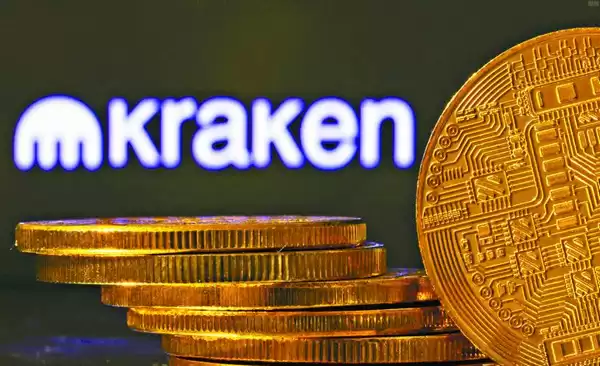-
 Bitcoin
Bitcoin $116500
1.98% -
 Ethereum
Ethereum $3851
6.94% -
 XRP
XRP $3.070
3.95% -
 Tether USDt
Tether USDt $1.000
0.04% -
 BNB
BNB $774.7
1.77% -
 Solana
Solana $171.9
4.66% -
 USDC
USDC $1.000
0.01% -
 Dogecoin
Dogecoin $0.2142
6.71% -
 TRON
TRON $0.3387
1.28% -
 Cardano
Cardano $0.7678
5.61% -
 Sui
Sui $3.747
9.68% -
 Hyperliquid
Hyperliquid $39.16
3.69% -
 Stellar
Stellar $0.4157
6.28% -
 Chainlink
Chainlink $17.93
9.21% -
 Bitcoin Cash
Bitcoin Cash $578.1
3.28% -
 Hedera
Hedera $0.2531
5.60% -
 Ethena USDe
Ethena USDe $1.001
-0.02% -
 Avalanche
Avalanche $22.75
3.82% -
 Litecoin
Litecoin $120.1
3.76% -
 UNUS SED LEO
UNUS SED LEO $8.953
-0.37% -
 Toncoin
Toncoin $3.323
4.76% -
 Shiba Inu
Shiba Inu $0.00001266
4.22% -
 Uniswap
Uniswap $10.13
7.08% -
 Polkadot
Polkadot $3.786
5.09% -
 Dai
Dai $1.000
-0.02% -
 Monero
Monero $273.0
-5.03% -
 Bitget Token
Bitget Token $4.391
1.62% -
 Cronos
Cronos $0.1480
5.45% -
 Pepe
Pepe $0.00001091
5.80% -
 Ethena
Ethena $0.6314
11.93%
How to calculate Kraken contract returns
To calculate the returns on a Kraken futures contract, you must factor in the contract price, underlying asset price, contract size, margin rate, and funding rate.
Nov 11, 2024 at 08:05 pm

How to Calculate Kraken Contract Returns
Introduction
Kraken is a popular cryptocurrency exchange that offers a variety of trading options, including futures contracts. Futures contracts are agreements to buy or sell an asset at a specified price on a future date. They can be used for hedging, speculation, and arbitrage.
Calculating the returns on a Kraken contract is a relatively straightforward process. However, there are a few factors that you need to take into account. These include:
- The contract price
- The underlying asset price
- The contract size
- The margin rate
- The funding rate
Steps to Calculate Kraken Contract Returns
- Determine the contract price. The contract price is the price at which you buy or sell the contract. It is expressed in terms of the underlying asset. For example, if you are buying a Bitcoin futures contract, the contract price will be quoted in Bitcoin.
- Determine the underlying asset price. The underlying asset price is the price of the asset that is being traded. For example, if you are buying a Bitcoin futures contract, the underlying asset price will be the price of Bitcoin.
- Determine the contract size. The contract size is the number of units of the underlying asset that are being traded. For example, if you are buying a Bitcoin futures contract, the contract size will be 1 BTC.
- Determine the margin rate. The margin rate is the percentage of the contract value that you are required to deposit as collateral. For example, if you are buying a Bitcoin futures contract with a margin rate of 10%, you will need to deposit 0.1 BTC as collateral.
- Determine the funding rate. The funding rate is the fee that is charged or paid to the holders of a contract. It is used to ensure that the contract price remains in line with the underlying asset price. The funding rate is typically expressed in terms of an annual percentage rate (APR).
Example
Let's say that you buy a Bitcoin futures contract with the following parameters:
- Contract price: $10,000
- Underlying asset price: $10,000
- Contract size: 1 BTC
- Margin rate: 10%
Steps to calculate the returns:
- Calculate the initial margin. The initial margin is the amount of collateral that you are required to deposit. In this case, the initial margin is 0.1 BTC.
- Calculate the maintenance margin. The maintenance margin is the minimum amount of collateral that you must maintain in your account to keep the contract open. The maintenance margin is typically lower than the initial margin. In this case, the maintenance margin is 0.05 BTC.
- Calculate the profit or loss. The profit or loss on the contract is determined by the difference between the contract price and the underlying asset price. If the contract price is higher than the underlying asset price, you will make a profit. If the contract price is lower than the underlying asset price, you will make a loss.
- Calculate the return on investment (ROI). The ROI is the percentage return on your investment. It is calculated by dividing the profit or loss by the initial margin.
In this example, let's say that the underlying asset price increases to $11,000. The profit on the contract would be $1,000. The ROI would be 10% (1,000 / 10,000).
Factors to Consider
There are a few factors that can affect the returns on a Kraken contract. These include:
- The volatility of the underlying asset. The more volatile the underlying asset, the more volatile the contract returns will be.
- The liquidity of the contract. The more liquid the contract, the easier it will be to buy and sell the contract. This can affect the returns on the contract, as it can impact the bid-ask spread.
- The margin rate. The margin rate can affect the returns on the contract, as it determines the amount of collateral that you are required to deposit.
- The funding rate. The funding rate can affect the returns on the contract, as it can impact the cost of holding the contract open.
Conclusion
Calculating the returns on a Kraken contract is a relatively straightforward process. However, it is important to take into account the factors that can affect the returns, such as the volatility of the underlying asset, the liquidity of the contract, the margin rate, and the funding rate.
Disclaimer:info@kdj.com
The information provided is not trading advice. kdj.com does not assume any responsibility for any investments made based on the information provided in this article. Cryptocurrencies are highly volatile and it is highly recommended that you invest with caution after thorough research!
If you believe that the content used on this website infringes your copyright, please contact us immediately (info@kdj.com) and we will delete it promptly.
- Dogecoin, Crypto, and the 25x Gains Dream: What's Next?
- 2025-08-07 20:50:12
- Dogecoin: A Second Chance for the OG Meme Coin?
- 2025-08-07 20:50:12
- BlockchainFX: Your Choice for Long-Term Crypto Gains?
- 2025-08-07 21:10:12
- Pepe Dollar's Presale Mania: Memecoin Staking and the Crypto Revolution
- 2025-08-07 21:10:12
- Aave Users Targeted in Sophisticated Phishing Scam: A DeFi Reality Check
- 2025-08-07 21:15:56
- Ollama Turbo & GPT-OSS: Revolutionizing AI Model Accessibility and Speed
- 2025-08-07 20:29:33
Related knowledge

What programming languages are used for smart contracts?
Aug 07,2025 at 06:07pm
Understanding Smart Contracts and Their Execution EnvironmentSmart contracts are self-executing programs deployed on blockchain networks that automati...

What is a long position in crypto contracts?
Aug 07,2025 at 06:29pm
Understanding the Concept of a Long Position in Crypto ContractsA long position in crypto contracts refers to a trading strategy where a trader buys a...

Why is my Bitstamp futures position being liquidated?
Jul 23,2025 at 11:08am
Understanding Futures Liquidation on BitstampFutures trading on Bitstamp involves borrowing funds to open leveraged positions, which amplifies both po...

How to report Bitstamp futures for taxes?
Jul 30,2025 at 08:35am
Understanding Bitstamp Futures and Taxable EventsWhen trading Bitstamp futures, it’s essential to recognize that these financial instruments are treat...

Does Bitstamp offer inverse contracts?
Jul 23,2025 at 01:28pm
Understanding Inverse Contracts in Cryptocurrency TradingIn the realm of cryptocurrency derivatives, inverse contracts are a specific type of futures ...

What is the difference between futures and perpetuals on Bitstamp?
Jul 27,2025 at 05:08am
Understanding Futures Contracts on BitstampFutures contracts on Bitstamp are financial derivatives that allow traders to speculate on the future price...

What programming languages are used for smart contracts?
Aug 07,2025 at 06:07pm
Understanding Smart Contracts and Their Execution EnvironmentSmart contracts are self-executing programs deployed on blockchain networks that automati...

What is a long position in crypto contracts?
Aug 07,2025 at 06:29pm
Understanding the Concept of a Long Position in Crypto ContractsA long position in crypto contracts refers to a trading strategy where a trader buys a...

Why is my Bitstamp futures position being liquidated?
Jul 23,2025 at 11:08am
Understanding Futures Liquidation on BitstampFutures trading on Bitstamp involves borrowing funds to open leveraged positions, which amplifies both po...

How to report Bitstamp futures for taxes?
Jul 30,2025 at 08:35am
Understanding Bitstamp Futures and Taxable EventsWhen trading Bitstamp futures, it’s essential to recognize that these financial instruments are treat...

Does Bitstamp offer inverse contracts?
Jul 23,2025 at 01:28pm
Understanding Inverse Contracts in Cryptocurrency TradingIn the realm of cryptocurrency derivatives, inverse contracts are a specific type of futures ...

What is the difference between futures and perpetuals on Bitstamp?
Jul 27,2025 at 05:08am
Understanding Futures Contracts on BitstampFutures contracts on Bitstamp are financial derivatives that allow traders to speculate on the future price...
See all articles

























































































